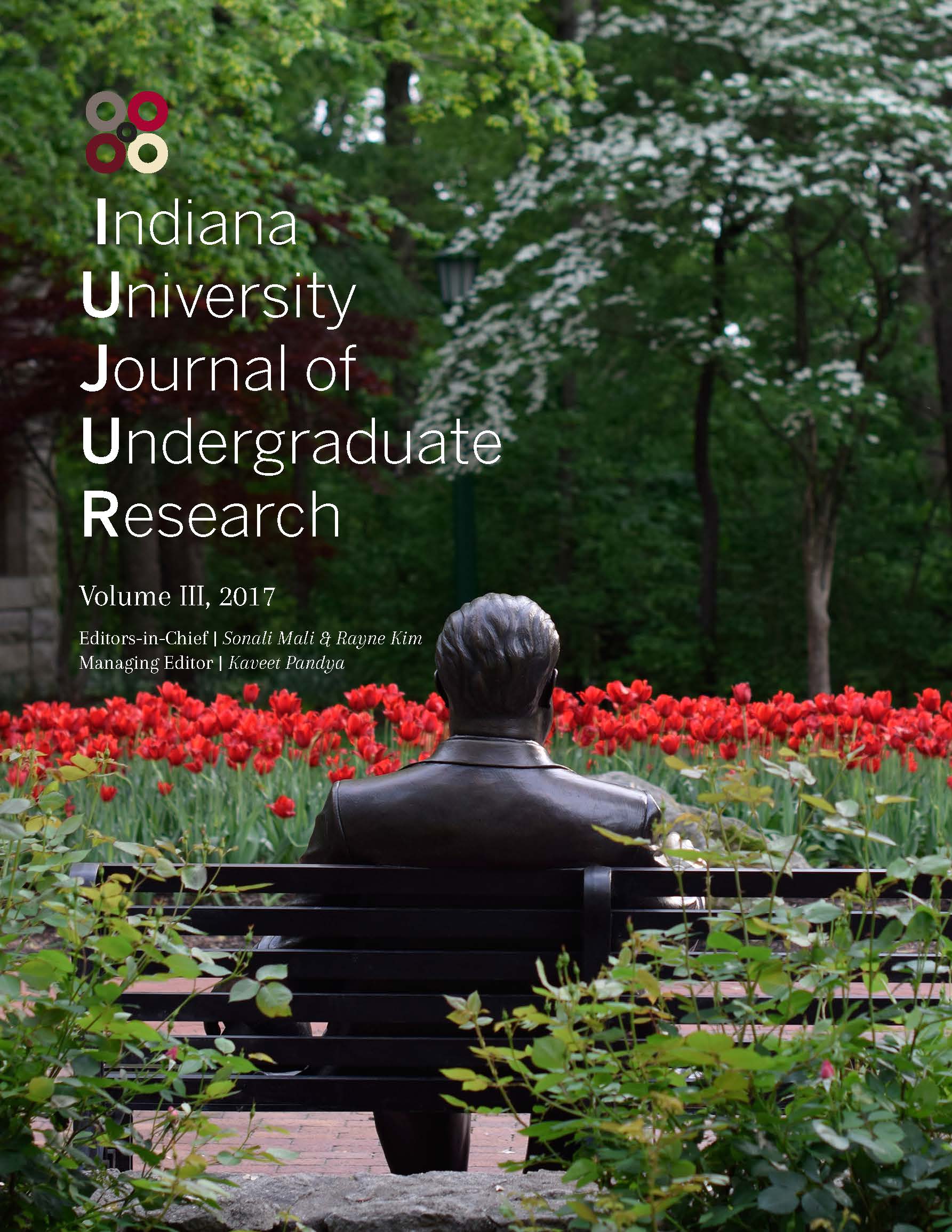"The Great Starlit Vault of Heaven": Walt Whitman's Treatment of Death through Astronomy
Main Article Content
Abstract
Death, or more accurately the defiance of death, is a recurring theme in Walt Whitman’s poetry. It is also an elusive one: though he consistently asserts humankind’s immortality, Whitman never arrives at a final treatment of death, instead allowing both his disposition toward death and the basis for his beliefs to be continually informed by his experiences. In this paper, I seek to better understand the metamorphosis of Whitman’s faith in immortality by exploring his use of astronomical imagery. He repeatedly calls upon stars, planets, and the night sky when discussing death, and his use of these motifs varies considerably throughout his career. To observe how the overlap between death and astronomy changes over time, I analyze poetry from three editions of Leaves of Grass: the first (1855), the edition published after the Civil War (1867), and the last (1891-1892). In doing so, I show that while Whitman initially found validation for immortality through external sublimity, this validation eventually collapses upon itself, leading him to discover an even more intense (yet still indefinite) proof within his own, internal poetic intuition.
Downloads
Article Details
Authors who publish with this journal agree to the following terms:
- Ownership of the copyright shall remain with the Author, subject to IUJUR’s use and the rights granted by the Creative Commons license assigned by the Author. A Creative Commons Attribution-NonCommercial 4.0 International (CC BY-NC 4.0) license will be applied to the published work unless otherwise indicated in the Student Author Contract. The CC BY-NC 4.0 license (https://creativecommons.org/licenses/by-nc/4.0/) lets others remix, tweak, and build upon the published Work non-commercially, and although the new works must also acknowledge the original IUJUR publication and be noncommercial, they don’t have to license their derivative works on the same terms.Authors are able to enter into separate, additional contractual arrangements for the non-exclusive distribution of the journal's published version of the work (e.g., post it to an institutional repository or publish it in a book), with an acknowledgement of its initial publication in this journal.
- Authors are permitted and encouraged to post their work online (e.g., in institutional repositories or on their website) prior to and during the submission process, as it can lead to productive exchanges, as well as earlier and greater citation of published work (See The Effect of Open Access).
References
Aspiz, Harold. So Long!: Walt Whitman’s Poetry of Death. Tuscaloosa: University of Alabama, 2004.
Beaver, Joseph. Walt Whitman, Poet of Science. New York: King’s Crown Press, 1951.
Holton, Gerald James, and Stephen G. Brush. Physics, the Human Adventure: From Copernicus to Einstein and beyond. New Brunswick: Rutgers University Press, 2001.
Hubble, Edwin. “A Relation between Distance and Radial Velocity among Extra-Galactic Nebulae.” Proceedings of the National Academy of Sciences of the United States of America 15, no. 3 (1929): 168-73.
Humboldt, Alexander von. Kosmos. Stuttgart, Germany: Cotta, 1845.
Kuebrich, David. Minor Prophecy: Walt Whitman’s New American Religion. Bloomington: Indiana University Press, 1989.
Preston, Nathaniel. “Walt Whitman’s Use of Indian Sources: A Reconsideration.” The Ritsummeikan Bungaku 627 (2012): 1-12.
Reynolds, Larry J. European Revolutions and the American Literary Renaissance. New Haven: Yale University Press, 1988.
Reynolds, Larry J and Tibbie E. Lynch. “Sense and Transcendence in Emerson, Thoreau, and Whitman.” The South Central Bulletin 39, no. 4 (1979): 148-51.
Schwind, Jean. “Van Gogh’s ‘Starry Night’ and Whitman: A Study in Source.” Walt Whitman Quarterly Review 3 (1985): 1-15.
Setzer, Suzan. “Whitman, Transcendentalism and the American Dream: Alliance with Nature’s Government through Language.” Modern Science and Vedic Science 9, no. 1 (1999): 2-48.
Trowbridge, John Townsend. “Reminiscences of Walt Whitman.” The Atlantic Monthly, February, 1902, 163-75.
Van Gogh, Vincent. The Complete Letters of Vincent Van Gogh, Volume Three. Boston: New York Graphic Society, 1981.
Whitman, Walt. Leaves of Grass. 2nd ed. Brooklyn: Fowler & Wells, 1856.Whitman, Walt. Leaves of Grass. 4th ed. New York: Wm. E. Chapin & Co., 1867.
Whitman, Walt. Leaves of Grass. 9th ed. Philadelphia: David McKay, 1891-1892.
Whitman, Walt. Leaves of Grass: A Textual Variorum of the Printed Poems, 3 vols. Edited by Sculley Bradley. New York: New York University Press, 1980.
Whitman, Walt. Leaves of Grass: The Original 1855 Edition. Mineola: Dover Publications, 2007.
Wohlpart, A. James. “From the Material to the Spiritual in the Sea-Drift Cluster: Transcendence in ‘On the Beach at Night,’ ‘The World below the Brine,’ and ‘On the Beach at Night Alone.’” Walt Whitman Quarterly Review 13 (1996): 149-158.

